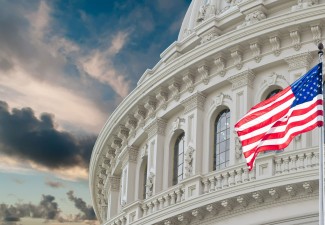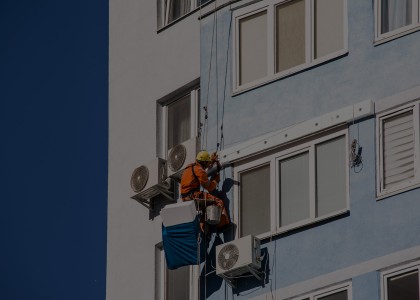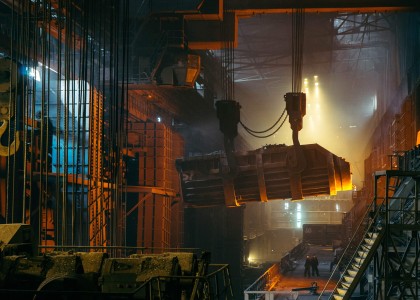The proposed Inflation Reduction Act (IRA) includes the largest combined investments in energy efficiency in U.S. history. If enacted in the coming weeks, it will provide tens of billions of dollars to improve our buildings, vehicles, and industry.
Energy efficiency is an essential part of the $369 billion IRA climate package, which will be a big step toward meeting President Biden’s climate and equity goals. While far more investment will be needed to address the climate crisis, the IRA investments—to be made over the next 5–10 years—will put us on a much better path. And the investments will save money for American consumers and businesses, grow the energy efficiency and clean energy industries, improve public health, and strengthen energy security.
Here are some of the energy efficiency highlights in the bill negotiated by Senator Joe Manchin (D-WV) and Majority Leader Chuck Schumer (D-NY):
Buildings
Homes and commercial buildings account for almost a third of U.S. greenhouse gas (GHG) emissions. To slash those emissions, we need to build new zero-net-energy buildings (highly efficient buildings that generate as much solar or other clean power as they consume) and we need to retrofit existing buildings in order to reduce air leaks and other waste and use efficient, electric equipment. IRA would turbocharge these efforts, making millions of homes and commercial buildings more comfortable and cheaper to operate as well as reducing their emissions.
The bill provides $9 billion for states to issue rebates to homeowners for whole-home retrofits and for efficient heat pumps, heat pump water heaters, and other electrical equipment (and training and education for contractors). Most of those funds would be for low- and moderate-income households, and the bill provides billions more in loans and grants for upgrades to subsidized apartments. IRA also restores and greatly increases tax credits for heat pumps and smaller home improvements such as insulation (25C credit) and strengthens the criteria for and the amount of the tax deduction for commercial building retrofits (179D).
Tax incentives for building highly efficient new homes (45L) and commercial buildings (179D again) also get a big boost, including extra incentives for “zero-energy-ready” homes and buildings.
The bill also gives $1 billion in additional aid to help states and cities adopt and implement strong building energy codes—one-third for jurisdictions adopting the latest model codes and two-thirds for those adopting codes to require zero-net-energy buildings. These codes promise major reductions in energy waste in all new buildings while making them more resilient, comfortable, and healthy for their occupants.
Transportation
The transportation sector accounts for more than a quarter of all U.S. GHG emissions. Electric vehicles and a transportation system that provides convenient and efficient alternatives to cars and trucks are key to cutting these emissions. IRA would speed the transition to electric vehicles, especially for larger vehicles like trucks and buses, but will do less to make needed changes to the larger transportation system.
The bill contains an important new tax credit and additional funding for purchasers of electric trucks and buses, which lag behind electric cars and SUVs in deployment. The bill also includes a new $4,000 credit for purchasing used electric cars and SUVs, and it revives the $7,500 credit for new electric vehicles, which had been slowly expiring. However, there are concerns that new requirements for U.S. sourcing of materials and battery components, along with income caps on who can take the credit, will limit usage, particularly in the early years.
The bill does much less for other ways of moving passengers and freight or for broader transportation system efficiency. But it does include $3 billion for a new Neighborhood Access and Equity grant program supporting projects that improve walkability, reduce vehicle pollution, and help residents use affordable transportation to access essential services and green spaces, especially in disadvantaged and underserved communities. This would be the first program focused on transportation equity funded at this level.
Industry
Decarbonizing industry—which accounts for almost a third of U.S. GHG emissions—will require effective energy management, transformative process technologies, use of electricity and low-carbon fuels, carbon capture, and shifts to use of materials responsible for lower life-cycle emissions (lower embodied carbon). IRA would provide significant support for the initial deployment of key technologies.
Most notably, it includes almost $6 billion for grants and loans to companies that use innovative decarbonization technologies, like direct reduction of iron from ore using hydrogen instead of fossil fuels or inert anode aluminum production. This Advanced Industrial Facilities Deployment Program, housed in the Department of Energy (DOE), would help enable full-scale commercialization of these new technologies.
IRA also allocates $10 billion for the 48C tax credit for transformative investments in manufacturing facilities and expands the credit to cover equipping an industrial plant to reduce GHG emissions by at least 20% (among other uses). The bill adds a tax incentive for clean hydrogen and expands one for carbon capture, and it provides more than $4 billion to label and buy low-embodied-carbon building and transportation materials.
Provisions That Cut across Sectors
The bill also includes cross-cutting investments that could be used in buildings, transportation, or industry. The Environmental Protection Agency would disburse $27 billion for a GHG reduction fund, with a majority of funds for green banks and other nonprofits and most of those funds designated for low-income and disadvantaged communities. And it would deliver $3 billion in grants and assistance for environmental and climate justice work by community-based organizations and $5 billion in climate pollution reduction grants. The bill also increases the lending authority at DOE’s Loan Programs Office by $40 billion for large energy projects that reduce GHG emissions.
Proposals to transform the electric system were dropped from discussions long ago, but IRA would provide billions to support rural electric cooperatives, including for improving the efficiency of power plants and transmission.
Building a Strong Foundation for Climate Action
The Senate plans to consider the bill this week under its budget reconciliation procedure, which only requires a simple majority to pass. If enacted, these investments together promise to kick-start growth of most of the key measures identified in ACEEE’s Call to Action: electric vehicles, heat pumps, zero-energy buildings, industrial decarbonization, and more.
While this is the largest combined efficiency investment so far, trillions of dollars more will be needed to address the climate crisis while improving health, equity, and the economy. We need strong federal regulations through both new legislation and agency actions under existing laws. We also need effective state and local policies and long-term commitment from corporations. IRA will spur development of key efficiency technologies and industries, providing a foundation for private investment and further state, local, and federal action needed to solve the climate crisis.




